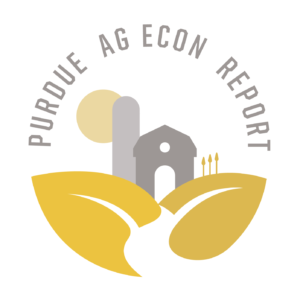Record Agricultural Trade
October 23, 2011
PAER-2011-11
Philip Abbott
U.S. agricultural exports for fiscal year 2011 are expected to set a record that surpasses the previous record in 2008 by a wide margin. According to USDA’s recent trade outlook, agricultural exports in 2011 will reach $137 billion and are projected to remain at that same high level for fiscal 2012. The previous record in 2008 was $114.9 billion. This strong export demand is contributing importantly to both high agricultural commodity prices and record farm incomes.
Export gains are largely due to high prices, especially for corn and soybeans. Grain and feed exports are up over $11 billion from fiscal 2010 and should increase another $1 billion in 2012. Oilseed exports are up $4 billion in 2011. In the case of wheat, expanded exports in 2011 made up for crop shortfalls in a number of the major exporting countries, and better crops there mean 2012 wheat exports may be lower. But anticipated high prices and strong export demand mean corn and soybean export value will remain high.
Large gains in exports have also been seen for beef, pork, poultry, and dairy products as prices for animal products have increased and export demand remains inelastic. Pork demand is especially robust from China, Japan, and Korea. Livestock, meat, and dairy exports are up $5.5 billion in 2011 from 2010. Animal product exports will remain at about the same value in 2012. Cotton prices and exports have also increased in 2011, by $4.3 billion.
High prices and inelastic food demand mean U.S. agricultural imports will also surpass the 2008 record. Agricultural imports in fiscal 2011 are projected to increase 20% from 2010 to $94.5 billion and increase another $10.5 billion to $105 billion in 2012. Agricultural imports had reached $79.3 billion in 2008, and after falling in 2009 have resumed climbing. In spite of increasing imports, the agricultural trade surplus should reach a record $42.5 billion in 2011, but will fall back to $32 billion in 2012 as import costs grow faster than exports.
One of the external factors contributing to high prices and strong foreign demand has been increasing imports of soybeans by China. Those imports had been growing steadily since the mid-1990s, but accelerated from 2008 to 2011, in part due to stockpiling by the Chinese as stocks elsewhere dwindled. Because the Chinese have accumulated large stocks, at about a 22% stocks-to-use ratio, it is expected that this factor will no longer expand Chinese soybean import demand. The USDA expects domestic demand and so imports by China to continue to grow, at a slower pace, and competition from Brazil and Argentina-who are responding to high world soybean prices-could mean somewhat lower U.S. soybean export volumes.
There are threats to this robust export outlook. USDA’s forecasts are based on an optimistic world economic outlook and a continuing weak dollar exchange rate. Slowing growth in Asia and Europe, seen recently, and European debt concerns could mean a somewhat stronger dollar and weaker export demand. Measures to fight inflation in emerging economies such as China and Brazil will slow future economic growth. Slowing world economic growth now appears to be resulting in weakening commodity prices that would cause final export values to be less than forecast by USDA.
There is little progress evident in WTO negotiations. The WTO Ministerial in Geneva this December is billed as a forum for “doing WTO’s business,” and progress on Doha Round negotiations is not expected. The bilateral agreements between the U.S. and Korea, Columbia, and Panama that were negotiated at the end of the Bush administration are now being moved forward by the Obama administration.
